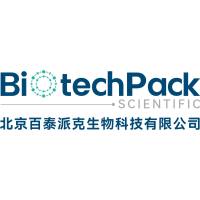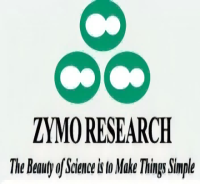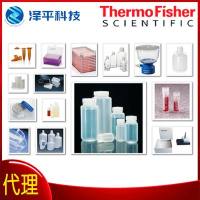Phycoerythrin conjugation protocol
互联网
3793
Phycoerythrin conjugation protocol
David's method modified from references (2) and (3). I used this method to conjugate a mouse IgG2a monoclonal antibody (IB4). It works well.
Reagents
| Ab | Antibody, about 2.5 mg/ml |
| PE | R-Phycoerythrin, purified (Molecular Probes P-801 in 60% ammonium sulfate) |
| PBS | Phosphate buffered saline without Ca2+ /Mg2+ |
| MeOH | Methanol |
| DMSO | Dimethyl sulphoxide, anhydrous |
| SPDP | 3-(2-pyridyldithio)propionic acid N-hydroxysuccinimide ester (Sigma) |
| SMCC | Succinimidyl trans-4-(N-maleimidylmethyl)cyclohexane-1-carboxylate (Molecular Probes) |
| DTT | Dithiothreitol |
| NEM | N-ethyl maleimide |
|
|
10 ml Sephadex G-10 columns (2) |
| Separation column | A long Sephacryl S-300 column. I used 117 x 1 cm. You can't really get away with anything smaller. Use a long thin one rather than a short fat one, since the latter did not work for me. Separation of the conjugate from the free reagents is tricky. |
|
|
Centricon 30 and Centriprep 30 centrifugal concentrators (Amicon) |
|
|
Room temperature is about 22 °C |
Method
1. Preparation of PE
2. SPDP modification of PE
3. SMCC modification of antibody
4. DTT treatment of SPDP-PE
5. Purification of reactants
6. Conjugation
7. Stop reaction
8. Concentrate product
9. Separate conjugate
10. Evaluate separation
11. Final concentration
-
R-PE from Molecular Probes. Part number P-801, R-PE in 60% NH4 SO4 at 4 mg/ml.
0.25 ml of P-801. Spin 10 mins on low in microfuge. Discard supernatant. Resuspend PE in 0.25 ml PBS. Dialyze twice for 30 mins versus 150 ml PBS at room temperature. -
Adjust PE to approx 1.4 mg/ml (=0.7 ml) in PBS
Add 16 µl SPDP (1.3 mg/ml in MeOH)
Incubate at room temperature for 2.5 hours
-
- 1 ml purified antibody at approx 2.5 mg/ml in PBS. Antibody must be fairly pure - i.e. purify on protein A or G column before conjugating.
Add 20 µl SMCC, 1.7 mg/ml in DMSO.
Incubate for 1 hour.
- Take product from step (2) and add 30 µl DTT (0.5M, i.e. 77 mg/ml in PBS).
Incubate for 30 mins at room temperature.- Separate derivatized PE and Ab from activators on G-10 columns. You should now have approximately 2 ml of each reactant.
- Mix derivatized reagents and incubate at 4 °C overnight on rotary mixer.
- Add 80 µl N-ethyl maleimide (0.1 mM) to reaction mixture to stop reaction. Agitate and incubate 30 mins at room temperature
- Concentrate to 0.5 ml or less on Centricon concentrator (Centricon 30 or 100 are fine)
- Apply to top of separation column. Elute with PBS. Pump column at approximately 0.3 ml/min.
Order of elution is conjugate first (MW ~400,000) then free PE (MW ~240,000) then free Ab (MW ~150,000). Begin collecting 1.0 ml fractions when pink band approaches bottom of column and continue for 10 fractions after it has disappeared.- Measure OD280 and OD565 - the former is protein, the latter the PE absorption peak. Test activity of each fraction against known reactive cells by flow cytometry. Plot all these results on a graph and estimate where the most conjugate is (See figure below). Pool these fractions.
- Concentrate pooled conjugate fractions using Centriprep and Centricon concentrators.
Add 0.5% sodium azide. Store at 4 °C protected from light. Do not freeze. - 1 ml purified antibody at approx 2.5 mg/ml in PBS. Antibody must be fairly pure - i.e. purify on protein A or G column before conjugating.
<center><a name="fig"> <font></font></a><font><a name="fig"><font><img src="http://img.dxycdn.com/trademd/upload/asset/meeting/2013/09/05/A1378267618.gif" /> </font> </a></font></center>
Figure 1. Analysis of column eluate fractions from PE conjugation of monoclonal antibody IB4 (murine IgG2a, anti-human CD18). The optical density of each fraction was measured at 280 nm and 565 nm (OD280 and OD565 respectively). An aliquot of each fraction was used to stain human neutrophils which were then analyzed using a FACScan flow cytometer (Becton-Dickinson). Median cellular fluorescence intensity in the FL2 (orange fluorescence) channel is shown.
References
- Chambers JD, Simon SI, Berger EM, Sklar LA, Arfors K-E. Endocytosis of beta2 integrins by stimulated human neutrophils analyzed by flow cytometry. Journal of Leukocyte Biology 53: 462-469 (1993)
- Kronick MN, Grossman PD. Immunoassay techniques with fluorescent phycobiliprotein conjugates. Clinical chemistry 29: 1582-1586 (1983)
- Oi VT, Glazer AN, Stryer L. Fluorescent phycobiliprotein conjugates for analyses of cells and molecules. Journal of Cell Biology 93: 981-986 (1982)








